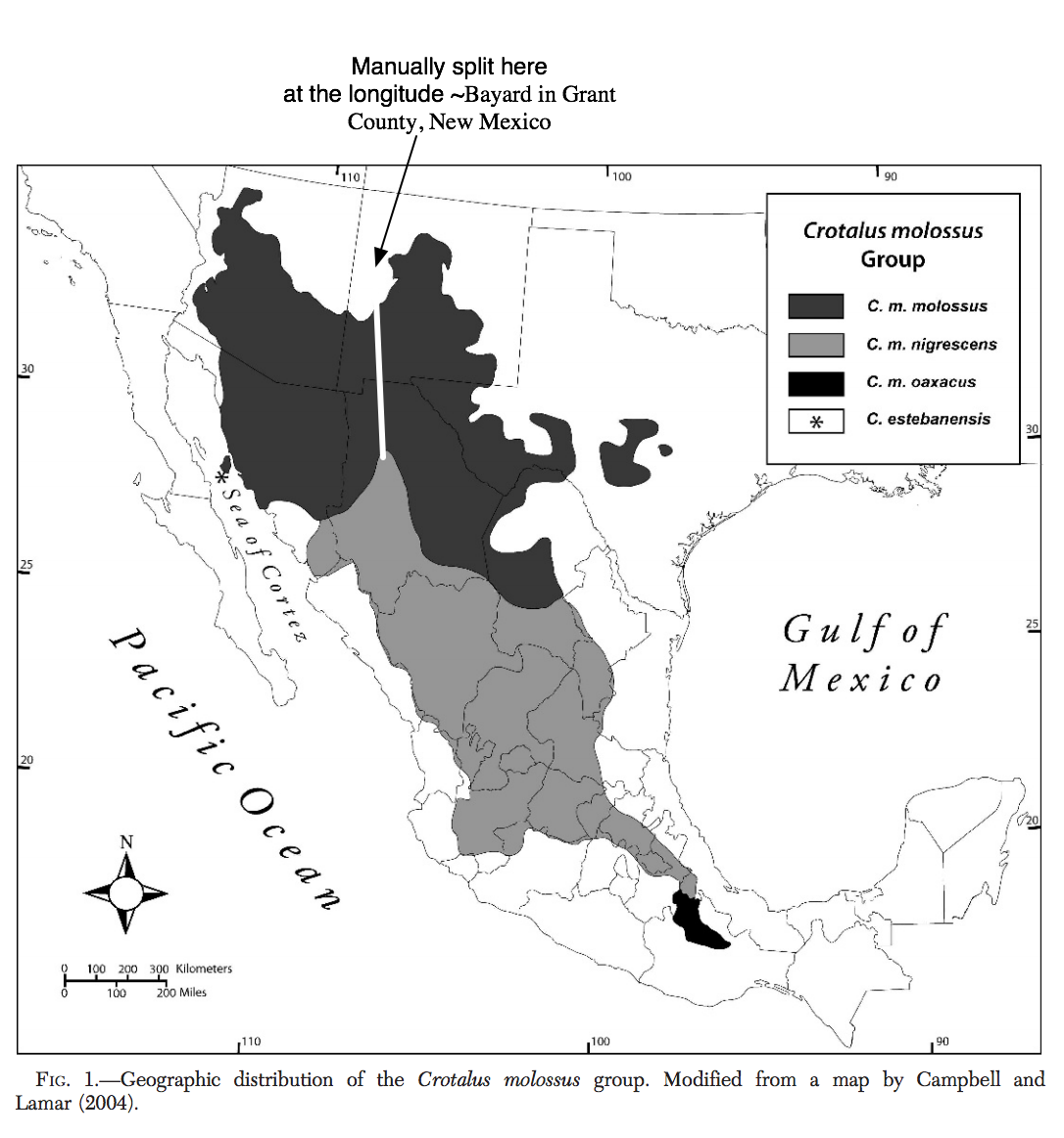 Taxonomic Split 18138
(Committed on 2016-11-19)
Taxonomic Split 18138
(Committed on 2016-11-19)
|
|
split into |
|
Comments
My bottom line is I follow Crother et al (published by SSAR but representing HL and ASIH as well) taxonomy because I respect the collective opinion of the many true experts on Brian's committee (who understand how to interpret genetic analyses FAR better than I). So I support dividing the C. molossus (sensu lato) group and resurrecting C. ornatus, as suggested.
However, I remain disturbed by the taxonomic dilemma presented by hybrid populations where such closely-related "species" intergrate - assuming they do (e.g., C. oreganus and "C. helleri"). This comes down to where to put the boundary (and I guess there must be one) for iNaturalist. Anderson and Greenbaum (2012) state that "the northern Chihuahuan Desert defines the geographic distribution of C. ornatus." (p.42) There seem to be as many definitions of the boundaries of the Sonoran and Chihuahuan Deserts as there are authors on the subject. The common area seems to be the Cochise Filter (aka: Deming Plain), where big climatological swings during recent glacial advances and retreats altered the environment between grassland and arid desert. While the filter is not sharply demarcated, it is consistent with the continental divide; i.e. the line of maximum elevation between the southern Rocky Mountains of the U.S. and the northern Sierra Madre Occidental in Mexico. After all, Anderson and Greenbaum (2012) date the genetic divergence to about the time of the uplifting of the Sierra Madre Occidental.
So, for my two-cents-worth, I would move your boundary a little bit west, maybe through extreme western New Mexico and extreme eastern Chihuahua - following the continental divide. But we must keep in mind that C. molossus (sensu lato) are almost certainly not sharply different (e.g., Anderson and Greenbaum's Madrean clade) on opposite sides of a narrow line on our map!
Thanks for asking!!









Black-tailed Rattle Snake enthusiasts (@wild-about-texas @gtsalmon @manuelnevarez @caudisona @scutdude @kueda et al, and please loop in anyone else who might be interested) on 8/16 a curator created a new active iNat taxon for Crotalus ornatus that already has quite a few observations now. Crotalus ornatus should have been split off from Crotalus molossus (sensu lato) because right now we've got Crotalus molossus (sensu lato) concepts coexisting with Crotalus ornatus concepts in places like Texas.
To remedy this, and to come inline with SSAR, I suggest the above split (even though I'm not a big fan for the reasons I stated above). Thoughts?
I created the ranges by manually splitting the Crotalus ssp molossus molossus portion of the IUCN range at the latitude described in the paper (which is extremely vague) like so. But if anyone has a better boundary to propose (I hear there's a new 2016 Peterson field guide out that includes maps of these species) please pass it on
